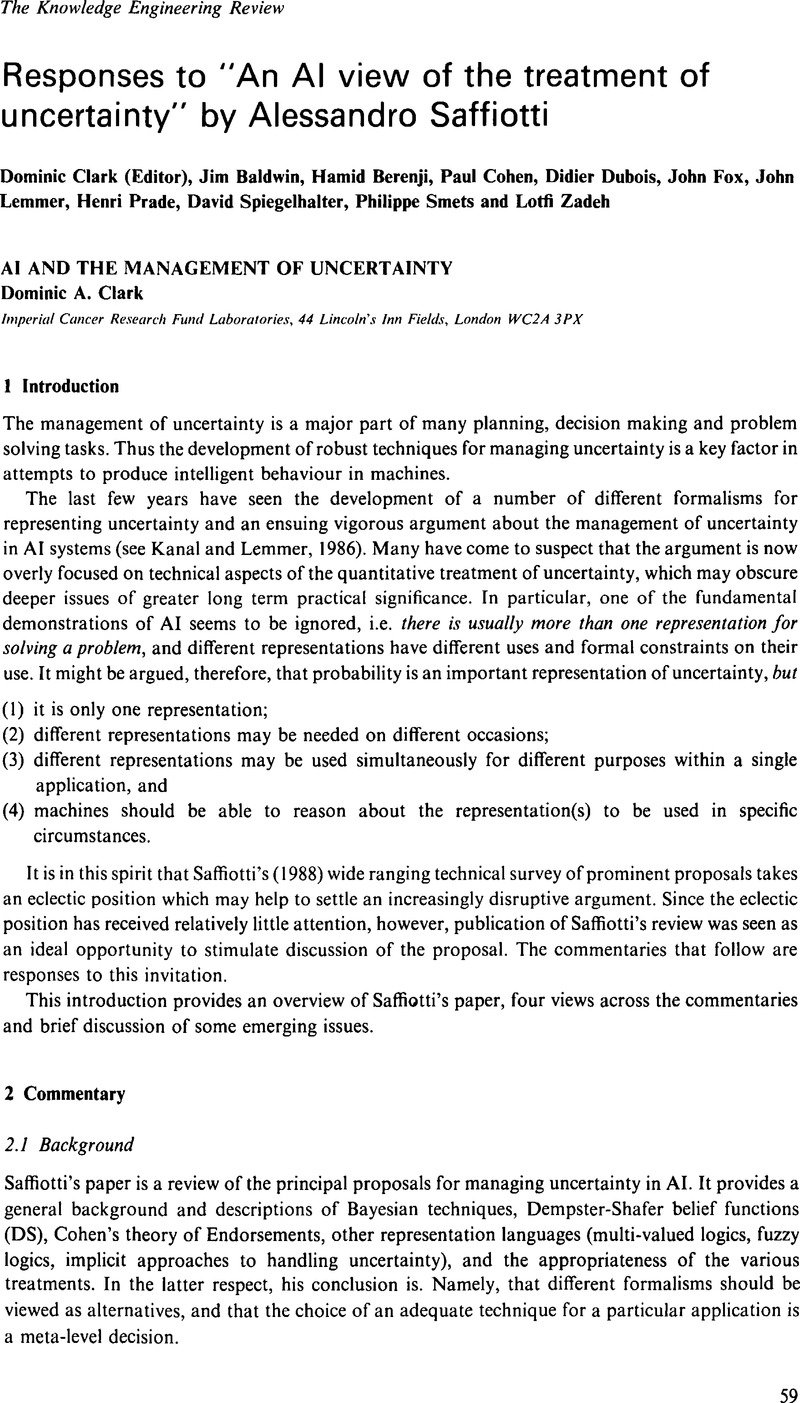Crossref Citations
This article has been cited by the following publications. This list is generated based on data provided by Crossref.
Bortolan, G.
and
Degani, R.
1989.
AIME 89.
Vol. 38,
Issue. ,
p.
135.
Fox, J.
Clark, D.A.
Glowinski, A.J.
and
O'Neil, M.J.
1990.
Using predicate logic to integrate qualitative reasoning and classical decision theory.
IEEE Transactions on Systems, Man, and Cybernetics,
Vol. 20,
Issue. 2,
p.
347.
Clark, Dominic A.
1990.
Numerical and symbolic approaches to uncertainty management in AI.
Artificial Intelligence Review,
Vol. 4,
Issue. 2,
p.
109.
Graham, Ian
1991.
Fuzzy logic in commercial expert systems — Results and prospects.
Fuzzy Sets and Systems,
Vol. 40,
Issue. 3,
p.
451.
Saffiotti, Alessandro
Umkehrer, Elisabeth
and
Parsons, Simon
1994.
Comparing Uncertainty Management Techniques.
Computer-Aided Civil and Infrastructure Engineering,
Vol. 9,
Issue. 5,
p.
367.
Grando, Adela
Coiera, Enrico
Glasspool, David
Wyatt, Jeremy C
and
Peleg, Mor
2021.
In Memoriam. Safe, Sound and Profound: A Tribute to Prof. John Fox, PhD, FACMI, FIAHSI (1948–2021).
Journal of Biomedical Informatics,
Vol. 123,
Issue. ,
p.
103933.





